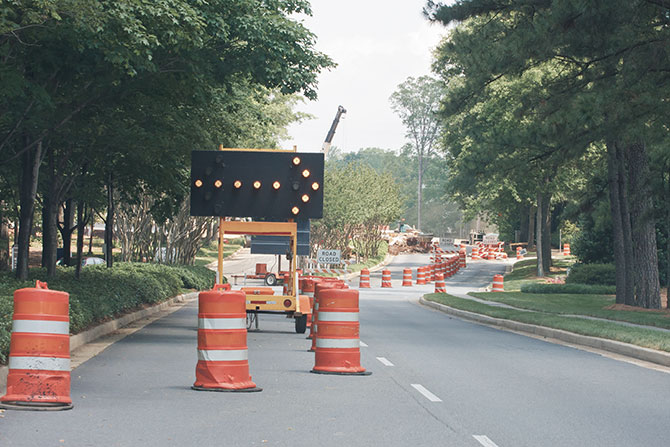Picture the last time you were driving down a local road or a minor collector, and suddenly you came across a road closure. Your destination is just down the street, and you know it will take five minutes to take another route. You are confident that your vehicle will fit through the traffic control devices, the site looks safe and there is no construction being performed at the time. Do you drive through?
The above situation happens all too often within a locale, and when it does, the drivers start to disregard or ignore temporary traffic control devices and signs. This disregard can create a serious safety concern when the closed road is for an excavation trench that is open for various reasons. The MUTCD Section 6B.01 Fundamental Principles of Temporary Traffic Control states, “08) Before any new detour or temporary route is opened to traffic, all necessary signs shall be in place. 09) All TTC devices shall be removed as soon as practical when they are no longer needed. When work is suspended for short periods of time, TTC devices that are no longer appropriate shall be removed or covered.”
Whenever possible, traffic control devices and signage should be taken down to provide public access to the travelway. Leaving unnecessary signage in place trains the public not to take the signage or traffic control devices seriously. Drivers will not slow down, and they will also drive through barricades, remove traffic control devices and possibly ignore the construction zone altogether. Their disregard creates a serious safety concern for the drivers and construction workers on all job sites.
All job sites, small or large, need the same high level of care from engineering and construction professionals when they review and create traffic control plans.
Under most circumstances, the contractor’s favorite method of traffic control is a full road closure. By closing the road, they can have complete control of the job site, and it is the safest environment for their crews. When a full closure is in place for less than a day, the contractor must provide either a posted detour or have personnel at the closure barricades that inform and direct the drivers about how to reach their destination. Residents need to be provided in advance with flyers, message boards or both so they know how to access their homes or place of business. For closures that last more than a day, a full pre-approved posted detour will need to be set up and maintained for the closure duration. When active construction work is not taking place, and the road surface can be maintained, the road closure should be taken down and traffic allowed through the job site. If there are still some hazards and the site will allow two-way traffic, then the hazards can be mitigated with proper traffic control to allow safe passage of traffic through the job site.
Suppose traffic in both directions is required to remain open. In addition to following MUTCD standards, traffic control should not be set up more than a few days in advance. If the traffic control is set up too early, the traveling public will quickly start to ignore it. It is beneficial to place the traffic control on the shoulder or on the side of the road before a construction start date. Doing so will inform the drivers that a project is coming. The same should apply as soon as the road work is complete or inactive for more than a few days.
In conclusion, consider driver habits and their long-term impact whenever you review or create a traffic plan for a project. Drivers quickly start to disregard the devices when unnecessary traffic control is in place. Their disregard puts them and construction crews at an unnecessarily higher safety risk. Let’s keep our construction sites safe!
Britton Tveten is a licensed civil engineer currently working for Pleasant Grove City. He has spent most of his career working as a consultant while specializing in transportation design and construction engineering management. He graduated from the University of Utah in 2013 with a Bachelor of Science in Civil Engineering. One of the most enjoyable aspects of his career has been the ability to get outside and away from the desk. He enjoys being outdoors to camp, hike, fish and hunt in his spare time. He gets to take his wife, three children and the dog on these outings most of the time. Britton often travels to the Pacific Coast and the Pacific Northwest when the opportunity allows. One of his favorite places to go is a family-owned cabin that has no modern amenities such as power or even water; the best part is no cell service either.









